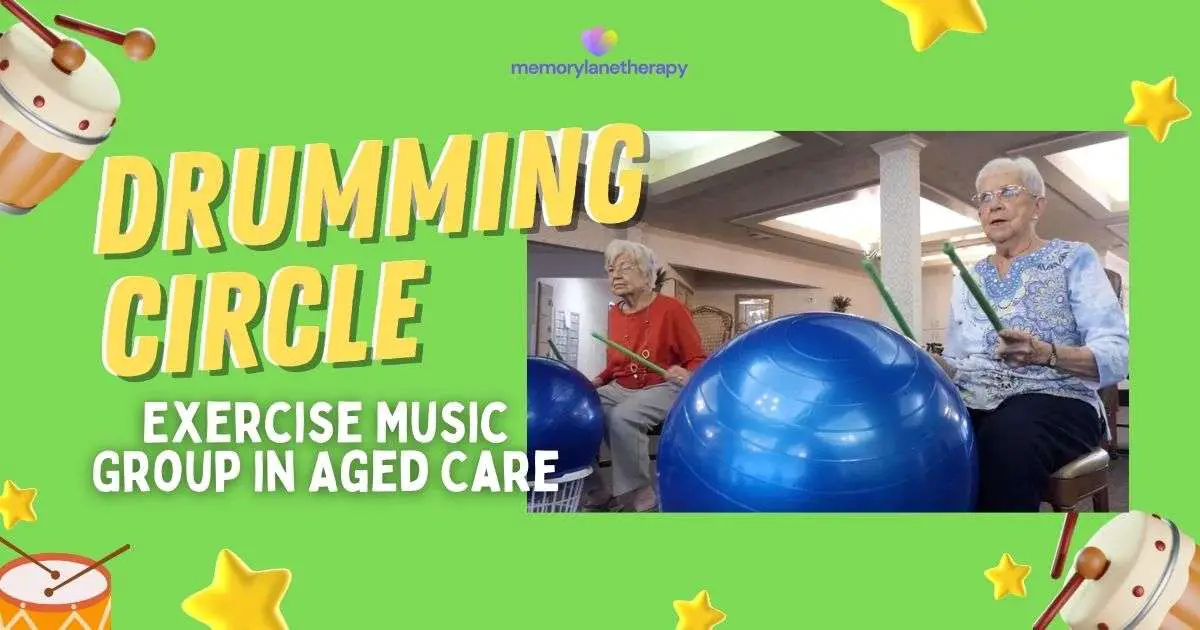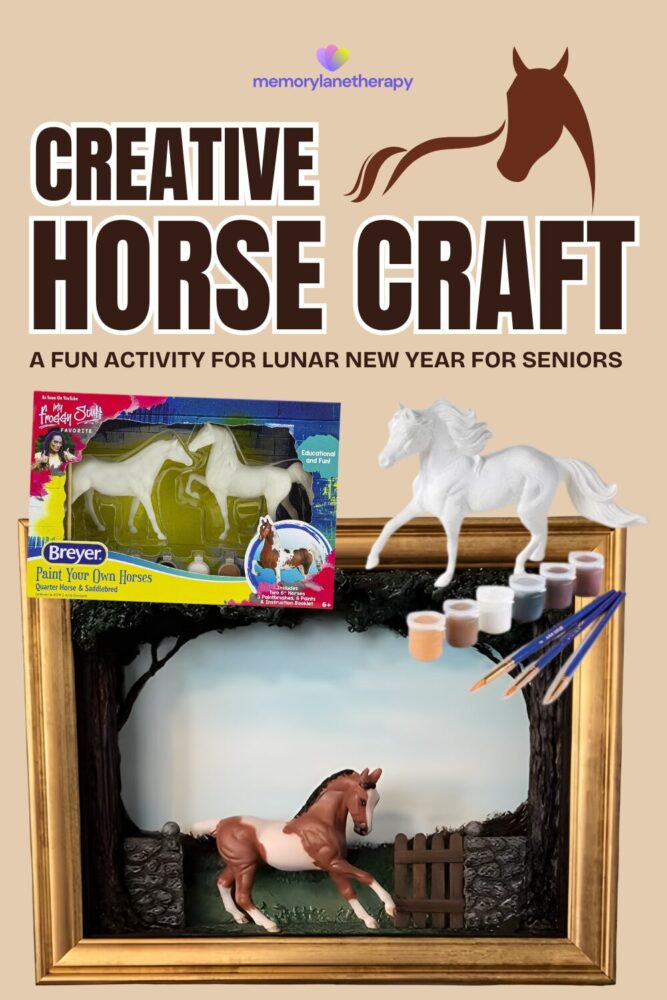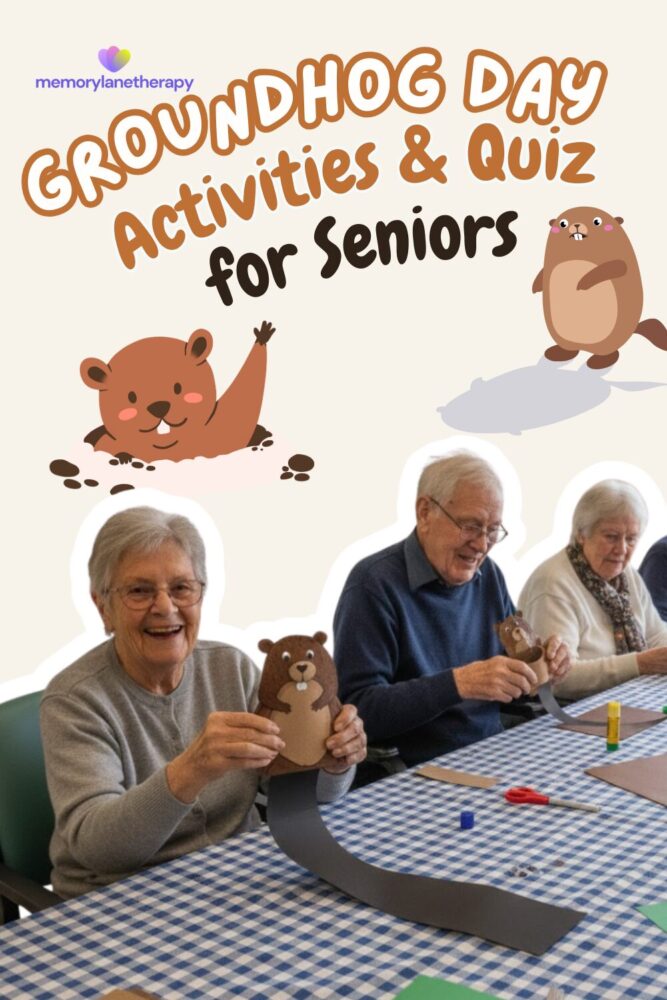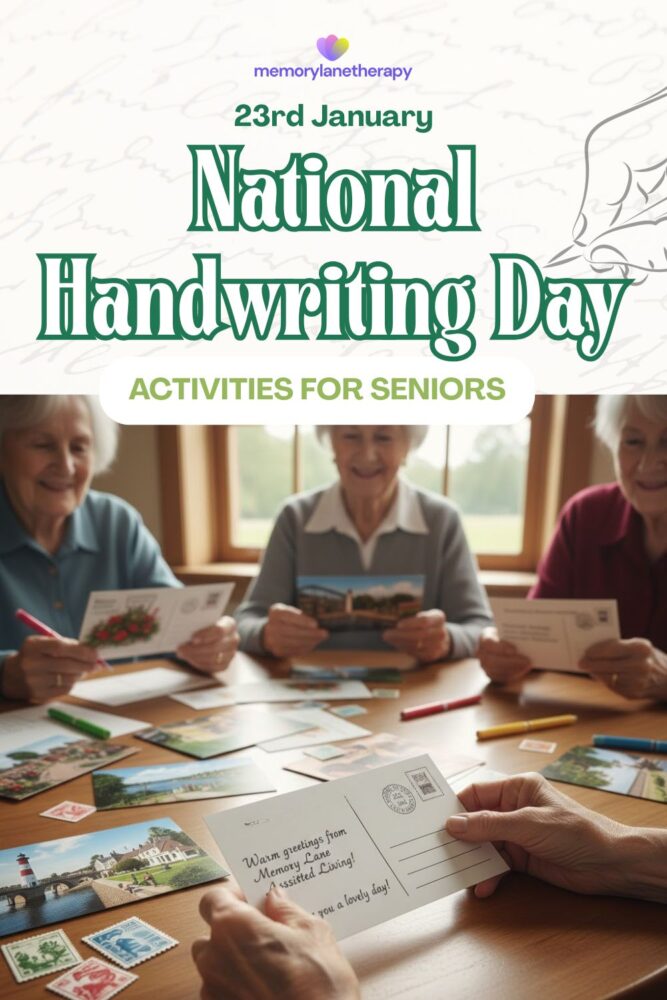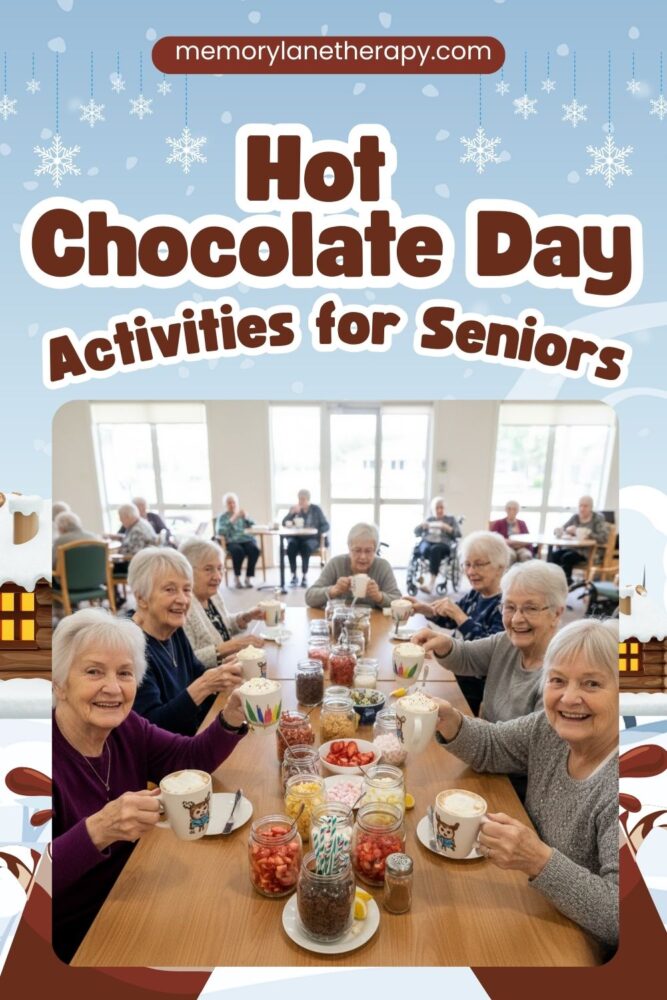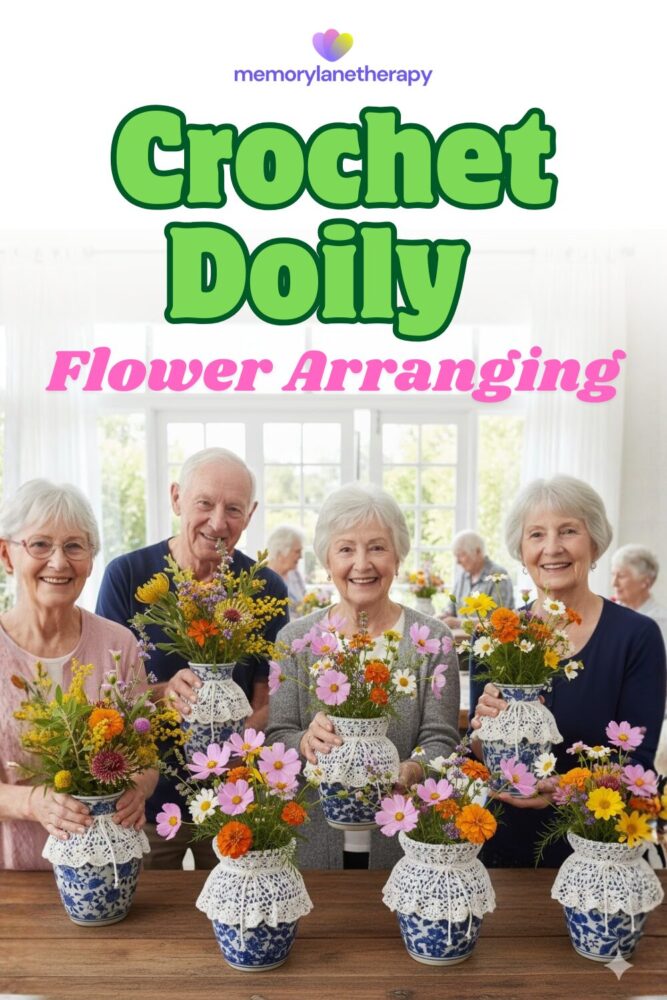There’s something undeniably magical about the beat of a drum, the primal rhythm that resonates deep within us. And when it comes to seniors in aged care, drumming circles can be a truly enchanting experience! Memory Lane Therapy presents the Drumming Circle Exercise for Seniors!
Picture this: a group of residents, each with a medley of percussion instruments, coming together to create music that reverberates with happiness, enjoyment, and a sense of belonging.
Steps to Get Started with the Drumming Circle Exercise:
1. Gather Your Drumming Circle Equipment
- Rubber Balls: Acquire medium to large rubber balls for each participant. These will serve as the percussion instruments.
- Containers: Collect small plastic laundry baskets to hold the rubber balls. Alternatively, you can use sturdy cardboard boxes or repurpose plastic buckets.
- Drumsticks: Ensure there are two wooden sticks or drumsticks for each participant.

1. Preparing the Instruments
- Decorate: If you’re using cardboard boxes or recycled plastic buckets, provide materials for residents to decorate their drums. This personal touch adds uniqueness to their instruments.
3. Warm-Up Exercises
- Warm-Up: Start each session with gentle warm-up exercises. Focus on rolling the shoulders, stretching the neck, and flexing the wrists. These exercises prepare participants for the physical activity ahead.
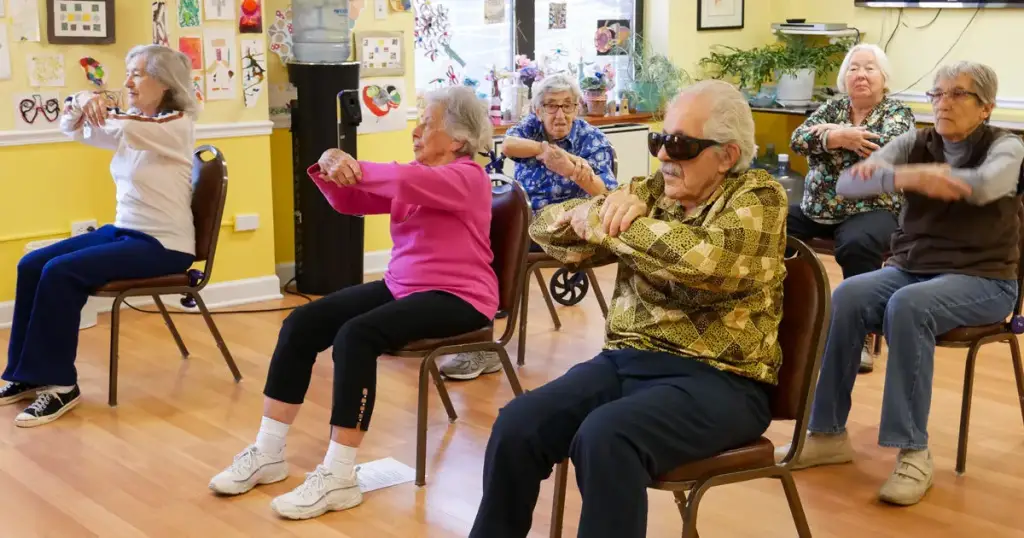
4. Set Up the Circle
- Arrangement: Arrange the participants in a circle with enough space between them. This circle configuration encourages interaction and allows everyone to see and hear each other.
- Instructor Placement: Position yourself at the front of the circle with a drum and drumsticks visible to all. This ensures participants can easily follow your instructions.
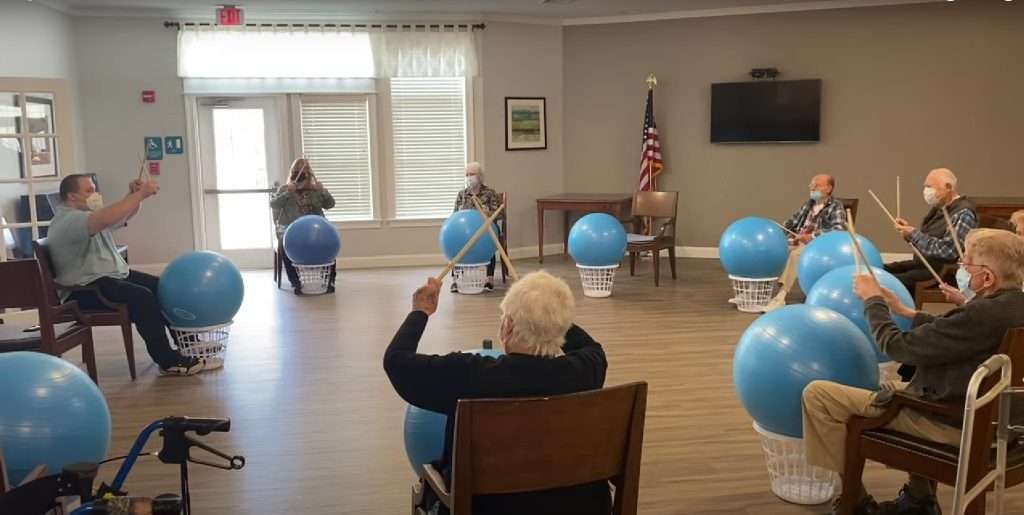
5. Communication
- Microphone: Consider using a wireless headset microphone connected to a speaker. This is especially useful for larger groups or if participants have hearing impairments. Clear communication is essential during the activity.

6. Drumming Session
- Music Selection: Choose music tracks that are suitable for drumming. Start with simple rhythms and gradually increase the tempo as the group becomes more comfortable.
So, which tunes make for the perfect drumming soundtrack? Here are a few rhythmic choices to get you started:
- Sweet Caroline – Neil Diamond
- Down on the Corner – Creedence Clearwater Revival (CCR)
- Achy Breaky Heart – Billy Ray Cyrus
- The Lion Sleeps Tonight – The Tokens
- Summertime Blues – Alan Jackson
- You Better Shape Up – Olivia Newton-John (from Grease)
- Instruction: Begin with basic drumming techniques. If you’re not experienced in drumming, watch instructional videos to learn some moves and techniques to teach the group.
7. Enjoy and Have Fun
- Encourage Participation: Encourage residents to actively participate. Drumming should be enjoyable and a chance for everyone to express themselves.
- Create a Social Atmosphere: Foster a social atmosphere where participants can enjoy the music and have a great time together. Drumming circles are as much about the joy of music as they are about exercise.

8. Safety and Considerations
- Duration: Keep each drumming session to around 30 minutes to avoid overexertion, as it can be a physically demanding activity.
- Hydration: Provide refreshments to keep everyone hydrated during the session.
- Storage: If you’re using rubber balls, consider storage solutions as they can take up space. Ensure they are stored safely when not in use.
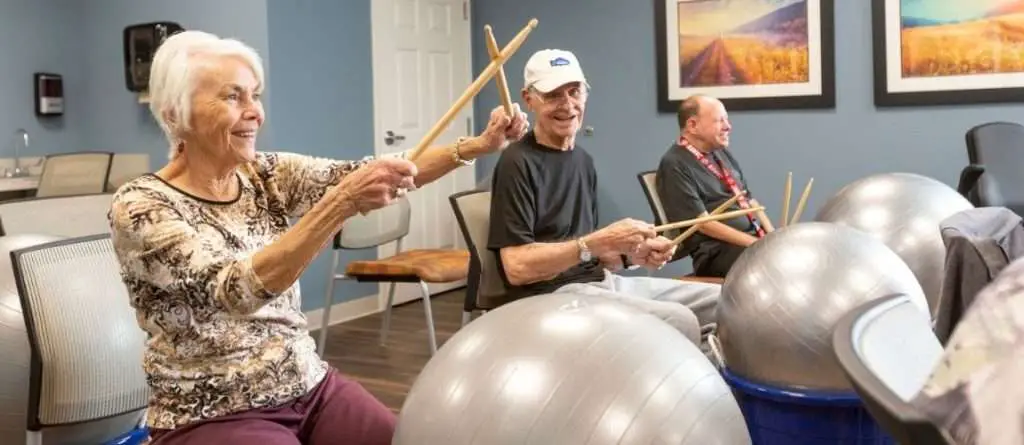
Drumming Exercise Experience!
By following these steps, you can create an engaging and enjoyable drumming circle for seniors in aged care. This activity promotes physical exercise, social interaction, and the sheer pleasure of making music together. Remember to choose music that resonates with the group, and most importantly, have fun!

